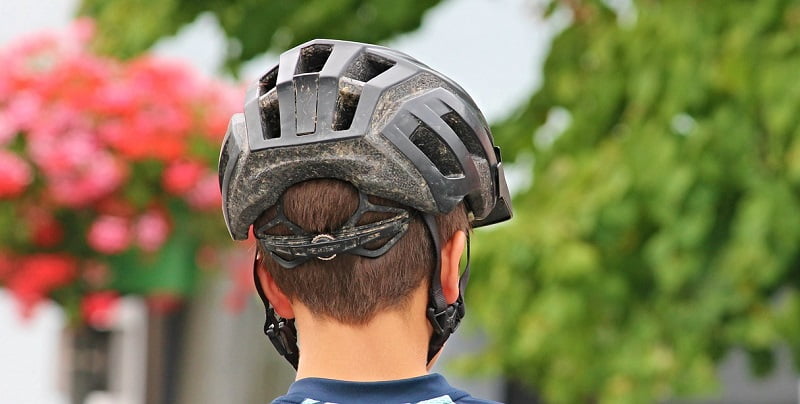Last Updated on August 12, 2022 by Editorial Staff
Cycling provides several amazing benefits to those who find interest in it and to those who practice it appropriately. By “appropriately” I mean “with the right safety gear and accessories”. With cycling, you can ride down to the stores or across your town of residence without a helmet on or without wrapping your hands in gloves and nothing will look amiss. However, it is still advisable that you make it a habit to put on your helmet.
Sometimes the ride becomes so involving you won’t even see the car in front of you stopping. That’s why it’s called an accident. You need to put on your safety gear, especially the helmet. A good helmet can save your life even in the most unlikely of situations. This guide contains everything you need to know about safety bike helmet and how to select the right one for yourself.
Helmet Standard
There are all sorts of helmets available on the market. Some of them meet the safety standards, some don’t. Some are good for you, some are not. It may sound ironical, but the truth is; there are some helmets that would do you more harm or expose you to it more than they would protect you. Accessories like helmets should not just be picked from shelves without proper analysis.
It’s better to buy bicycle helmets that have been approved by the necessary authorities in your country. Being approved means it is fit for use and your safety is improved when you put it on; not repressed by it. Approved helmets usually have labels or stickers certifying that they meet your country’s standard. It also indicates that the helmet has passed strict safety tests.
Correct Helmet Fit
By putting on a helmet that correctly fits your head, your head protection is improved. But how do you know if it is the right fit? Well, you will have to try it out to find out. When you put on a correct-fit helmet, you’ll just notice it from the way it feels comfortable and how it stays perfectly in your head.
Whether your head has the kind of shape that people like to make fun of, there is always the right fit for every head. The first rule to staying safe and comfortable riding with a helmet on is to make sure it fits on your head perfectly. It should fit securely and comfortably when you fasten the straps. That is how you know it is the right size. Also, the straps aren’t supposed to be twisted, nor cover your ears when you fasten them.

Helmet Design
Helmets are often designed with a streamlined body so that it cuts through opposing air when riding your bike. With certain features remaining constant, helmets come in different designs. That means you can get what suits your style, as long as it is also capable of keeping your head safe from injury in case you hit the ground. Helmets are vital safety accessories designed to protect your head from injury in case of an impact. That’s why the foam should be sturdy enough not to break, and the strap strong enough to keep the helmet in your head no matter what happens.
When you are selecting a bike or motorcycle helmet, check to make sure it doesn’t hinder your visibility. The best motorcycle helmet is that which allows you to breathe, see, and hear even when your head is completely immersed in it. Some helmets will leave your head dripping sweat right from the time you put it on. That’s not what you need. Check if the helmet has proper ventilation before you purchase it.
Riding Style
Keep in mind that there are several riding styles, and each style has a special type of helmet that works best for it. For example, if you are practicing Downhill mountain biking, you need a full-face motorbike-style helmet for the ride. That’s to say your riding style should guide you into selecting the right helmet for the ride.
If the risk involved is higher, better head protection will be required. High-speed riding requires helmets that cover most parts of your head. You can own several helmet types so that every time you want to engage in a specific style of cycling, you pick the right helmet for it. Riding with the wrong type of helmet can come with implications that can otherwise be avoided.

Adjustability
Some helmets can be adjusted with ease, but some are hell to deal with. Adjustability is vital because, with the helmet on your head, you will need to tighten or loosen it sometimes in the middle of your riding adventure. There are cases where the straps adjust themselves and tighten up until it feels too tight. And when you try to loosen it, it becomes a problem.
Check the type and quality of the strap to determine its fitness. A safety bike helmet is easy to adjust and stays convenient throughout its use. You can slow down, adjust it with one hand while you hold on to the handlebar with another as you continue to ride. You can put it to test before you buy it if the shop owner can allow you. Also, some strap materials itch when mixed with sweat. Avoid them if possible.
Durability
Some bike helmets can only be used a few times before they need to be hanged. Such helmets only work perfectly for a while, after which their eligibility to provide safety is reduced. There are those that break easily. Durable helmets are the best. They can take several falls and hits before it can reduce its level of protection.
Final Thoughts
Bike and motorbike enthusiasts know how engaging riding can be. So much that it can be exceedingly easy to miss what might pose risk to your life. That’s why it’s advisable that you always put on the right gear, no matter how pro you think you are; no matter how close your destination might be. Select your helmet correctly and enjoy your riding even more. Knowing that your head is protected with the best helmet will increase your confidence and make riding more fun.
